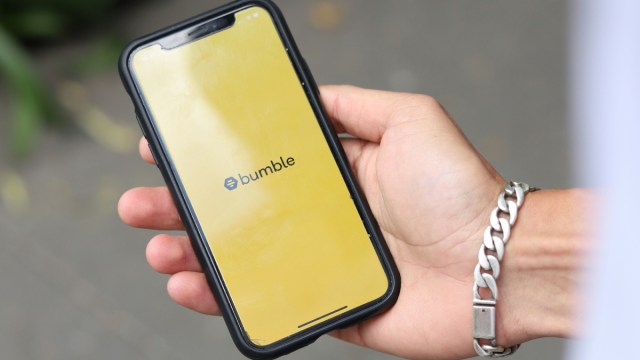The Cost of Cultural Ignorance: How Brands Can Get It Right
In the unfolding narrative of advertising’s cultural missteps, the recent Heinz ad controversy serves as a poignant reminder of the shadows cast by history. These ads resonate with the undertones of propaganda posters used to dehumanize and mischaracterize. They are relics of a time when images were manipulated to weave false narratives—narratives that continue to shape perceptions today.
This issue extends far beyond Heinz. Last year, KFC’s “Sorry, Utensils” campaign in Canada faced similar criticism for its depiction of Black individuals eating chicken, their exaggerated reflections in the unused utensils bordering on caricature. Coupled with the campaign’s slogan “finger lickin’ good,” seen by some as appropriating African American Vernacular English (AAVE), these choices weren’t simply oversights, these choices read as microaggressions that cut deep, reminding Black consumers that their identities are still subject to careless misrepresentation.
Consider the haunting imagery of Nazi propaganda, designed to marginalize and vilify, or the grotesque satire of African Americans during the Jim Crow era. These weren’t mere oversights; they were calculated attempts to distort reality, and their legacy persists. I think back to my visceral reaction in 2019 when Gucci released a balaclava eerily reminiscent of blackface minstrel makeup. It was a slap in the face, a stark reminder that even brands with massive resources can fall prey to these blunders. The Heinz ad, featuring a Black man with his mouth covered in red ketchup, evokes similar imagery.

While these ads may not have intended to cause harm, they inadvertently echo visual tropes from a painful past used to dehumanize and marginalize Black individuals.
In today’s world, brands can’t afford to be tone-deaf. It’s not solely an ethical imperative, but a strategic one. These instances underscore the need for brands to be more mindful of the subtle messages their visuals convey. It’s an opportunity for us to collectively learn and evolve, recognizing that even unintentional missteps can perpetuate harmful stereotypes.
To break this cycle, brands must embrace a multifaceted approach. Here’s what brands can do today to be more nuanced in their ideation and planning stages.
Stop leaving money on the table and tap into diverse thinking
If your brainstorming sessions look like a casting call for a 1950s sitcom, you’re doing it wrong. Diversity isn’t a trend; it’s the world we live in. At the heart of these recurring marketing blunders is a glaring absence of diverse voices. How does a brand as culturally ubiquitous as Heinz overlook such glaring insensitivities?
The answer lies in the homogeneity of those decision-making rooms. Without varied perspectives, ads are released into the world, only to be retracted amid justified public outcry. To effectively engage with multicultural markets, you need the richness of diverse life experiences.
Check yourself!
Diversity in creative teams is crucial, but it’s not enough. Even with diverse teams, unconscious biases can creep in. Integrate mandatory “cultural sensitivity checks” into every stage of the creative process. This means establishing review systems that rigorously assess whether content aligns with the cultural intricacies it seeks to depict. Disney’s establishment of a cultural consultants team serves as a commendable example.
Develop an internal checklist or audit tool, informed by data compiled from the communities your brands seek to engage. This goes beyond simple representation and delves into questions of power dynamics, historical context, and potential exploitation of cultural elements. It provides a structured framework for critical self-reflection, forcing teams to confront uncomfortable questions and justify their creative choices with a deeper understanding of cultural impact.
ERGs have ‘resource’ in the name
Employee resource groups (ERGs) should be leveraged not merely for cultural events but as integral participants in the creative process. They bring invaluable insight into community representation.
Instead of pitching a creative concept to a homogenous team, flip the script. Have members of your company’s ERGs (representing the cultures depicted in the ad) “pitch back” their interpretation of the concept. This provides immediate feedback on potential blind spots and unintended interpretations. It shifts the power dynamic, giving voice to those often spoken for, and forces the creative team to truly listen.
Keep it real
Authenticity is paramount. Not every brand needs to jump on every cultural bandwagon. Sometimes the most authentic thing you can do is be humble and sit down.
Brands must align their creative endeavors with their core values, ensuring that they contribute meaningfully to cultural dialogues. This involves introspection and a genuine assessment of whether their products truly serve the communities they wish to engage. Consumers, especially Gen Z and millennials, demand authenticity and social responsibility. Before trying to capitalize on the latest social justice movement, ask yourself: Do our core values align with this? Have we earned this community’s trust? Is this genuine or a money grab?
Know your lane.
Don’t let apologies become your brand story
Don’t let your brand become synonymous with reactive damage control; it erodes trust and makes any future attempts at cultural engagement feel performative. Instead, shift your focus to prevention. Before launching anything, dedicate serious time to brainstorming potential interpretations and reactions. Ask the tough questions: What if this image is misinterpreted? What if this language is offensive? What if this concept reinforces a harmful stereotype?
Don’t just rely on internal perspectives. Use focus groups, surveys, or online platforms to gauge reactions and identify potential blind spots. Proactive prevention is far more effective (and less damaging) than reactive apologies.
Ultimately, brands must learn from historical missteps and cultivate a future where cultural representation is approached with sensitivity and respect. Implementing diverse teams and instituting cultural checkpoints are not merely strategic moves—they are essential steps toward earning the trust and loyalty of diverse communities. It’s about more than just avoiding bad press; it’s about acknowledging the inherent beauty and complexity of our multicultural world and engaging with it in a way that honors its truth.
https://www.adweek.com/brand-marketing/the-cost-of-cultural-ignorance-how-brands-can-get-it-right/
